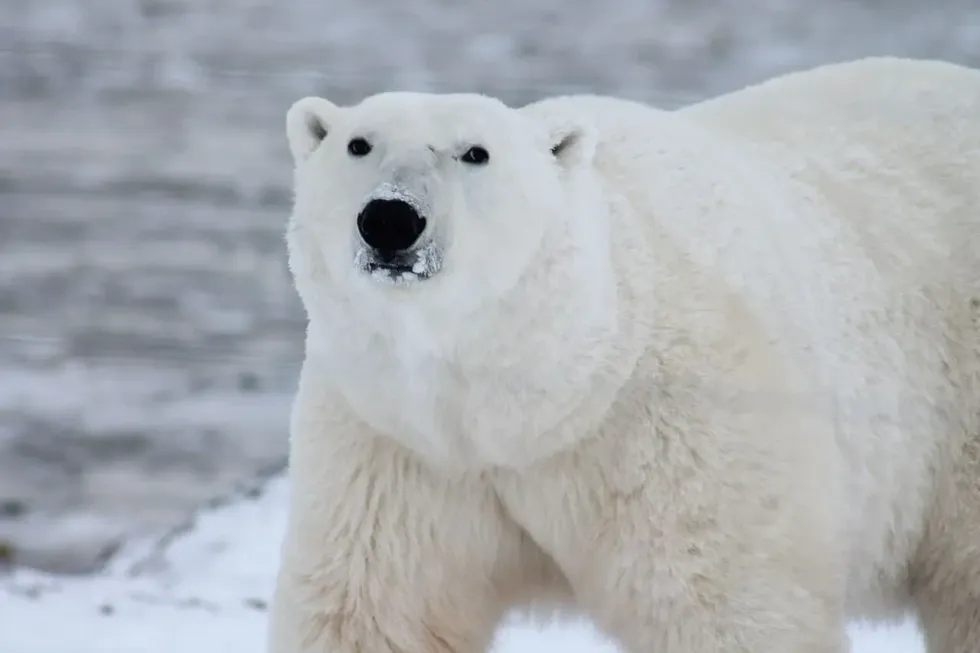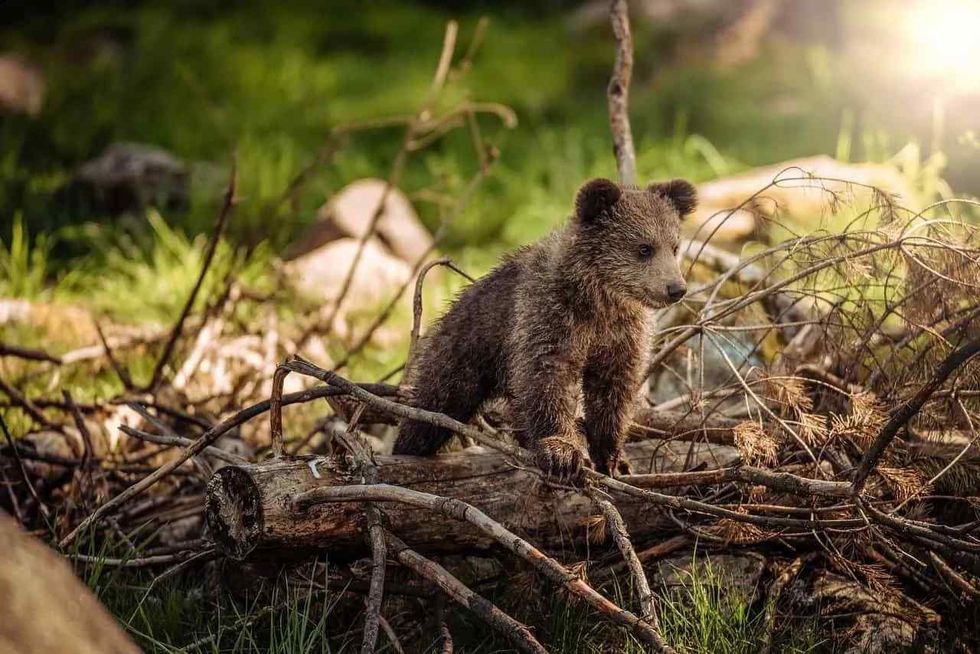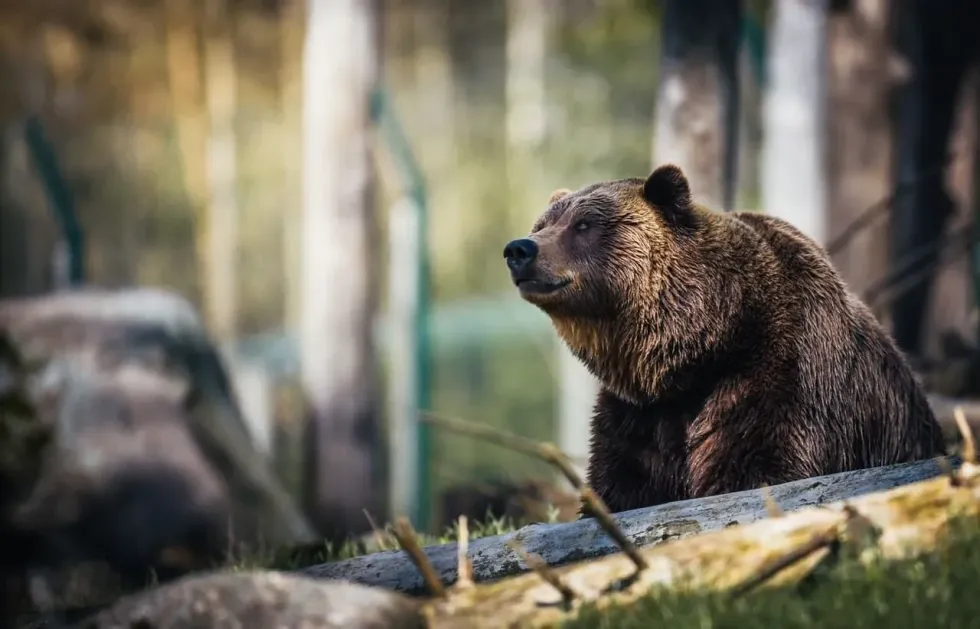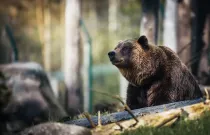101 Awesome Bear Facts That Kids Won't Bear-lieve sharks

There's something about bears.
They seem cute, but they're also incredibly majestic creatures with a fierce instinct for protecting their cubs. Trust us, you would not want to come across a loose grizzly bear!
If you're looking for the best facts about bears for children, we've compiled the ultimate list. From the eight different bear species to bears' preferred types of food, we've detailed just how cool bears really are.
Don't forget to check out our facts about other amazing animals, including sharks and African elephants.
General Fun Facts About Bears
If you're wondering how many species of bears are there, or any other general bear fact, then this is the list for you.
1. The common name for bears is 'bear', but the scientific name for bear is 'ursidae'.
2. A bear is a mammal with an omnivore diet, eating both meat and vegetation.
3. Bears love the taste of honey - just like Winnie the Pooh!
4. Bears average between 4 and 8 feet tall.
5. Bears can weigh between 60 to 1600 pounds.
6. The sun bear is the smallest bear species.
7. Broadly speaking, polar bears are considered the largest bear in the world.
8. Bears can be found throughout the continents of South America, Europe, Asia and North America.
9. They have an excellent sense of smell, which they use to find food, short tails and non-retractable claws.
10. There are eight species or types of bear: brown bears (which includes the grizzly bear), North American black bears, Asiatic black bears (also known as moon bears), polar bears, sloth bears, spectacled bears (also known as Andean bears), and sun bears. There are also koala bears and panda bears, although these are not classified as distinct bear species.
12. Of this eight species of bear, six species, including polar bears and the giant panda, are threatened or vulnerable species, according to the International Union for Conservation of Nature's Red List.
13. Bears are typically solitary unless they are mothering female bears with cubs.
14. Bears can live on average for up to 25 years in the wild and 50 in captivity.
15. Bears can walk a short distance on their hind legs, typically to get a better view of what's in front of them, or to maximise their sense of smell when searching for food.
16. Native Americans in the United States have referred to bears as 'the beasts that walk like man.'
17. Bears are amongst the most intelligent land-based species in North America, with the most complex brains compared to other land mammals of similar size.
18. Most bears hibernate in winter, a physical state where the heart rate, body temperature, metabolism, and respiration rate of the bear is lowered.
19. Giant pandas are the type of bear that do not hibernate.
20. Female bears can give birth to up to four cubs, but female panda bears give birth to only one cub.
21. The biggest threat to all species of bears is habitat loss, mostly from agriculture, logging, and growing human populations. Habitat loss means that bears have a reduced area in which to hunt, and therefore have to stray into human areas, where they can be killed out of concern for human safety.
21. Bears are important as they make the forest fertile through their deposits, and help seed dispersal, depositing seeds in different parts of the forest ecosystem and causing new plants to grow.
22. Bears also play a role as predators in helping to keep the populations of deer and moose in check.

Black Bear Facts
We've listed the best facts about black bears, including facts about the North American and Asiatic black bears here.
23. The North American black bear is the most common bear in the North American continent, found from Florida through into Canada and Alaska.
24. Despite their name, black bears can be blue-gray in color or even blue-black, and have been known to be brown, cinnamon, or sometimes white.
25. Black bears are excellent tree climbers, tending to be found in forests.
26. The favourite food of American black bears is berries and insect larvae, but they are omnivorous, eating meat if they need to.
27. Male black bears reach full size at around eight years of age, and can weight up to 600 pounds.
28. Female black bears produce cubs between five and seven years of age, and will tend to give birth to two or three cubs in mid-winter, nursing them in their den until spring.
29. Cubs will stay with their mother for two years.
30. Black bears can go for around 100 days or so when they are hibernating without eating, drinking, urinating, or defecating: they live off the fat that they build up during fall and summer.
31. Like most bear species, black bears are solitary animals.
32. Black bears roam large territories - males might wander an area between 15 and 80 square miles as their home range.
33. Black bears are typically the bear that you can see raiding trash cans in camp sites - they love to steal food, so it is best not to feed them.
34. Don't try to outrun black bears: a black bears' top speed can reach 25 miles per hour, and they can run at this speed for around two miles.
35. Asiatic black bears are threatened by illegal wildlife trade, as bear bile is an important ingredient in traditional Chinese medicine.
36. American black bears can be targeted for similar reasons, and are poached for their gall bladders, paws, and skin.
37. Asiatic black bears are distinctive for the white patch found on their chest, which is often crescent shaped.
38. Asiatic black bears can be found in eastern Asia, in countries including Afghanistan and Nepal, as well as in Russia and Vietnam.
39. Asiatic black bears eat more meat than American black bears: they love birds, fish, and mollusks, but also feed on fruits, insects, and berries.
40. Asiatic black bears found in southern climates do not hibernate, but those found in northern climates do.
Brown Bear Facts
We've picked the best brown bear and grizzly bear facts to inform you about these beautiful, but fierce, creatures.
41. Brown bears can be found in the forests and mountains of North America, most notably Alaska, western Canada, and in some parts of the states of Washington, Montana, and Wyoming.
42. Small numbers of the species can also be found in parts of Europe and Asia, significantly in Russia.
43. The brown bear is the most widely distributed bear in the world, and it also has the lowest risk rate of extinction.
44. The largest brown bears are known as the 'Big Browns' (this includes the grizzly bear), and can be found along the coast of both Russia and Alaska.
45. 'Big browns' are known to reach the size of polar bears, and can reach up to 1500 pounds in weight.
46. Brown bears range in colour from very light brown to blonde, as well as a darker brown to almost black.
47. The grizzly bear can be found in the North American Rocky Mountains.
48. Brown bears roam over vast amounts of land - up to 1,000 square miles.
49. Brown bears love to eat salmon for their food, which they either pull from the water or catch mid-air.
50. Brown bears also enjoy nuts, berries, leaves, and roots, but they can eat other animals, including moose.
51. Male brown bears have also been known to eat as many as 40,000 moths in one day.
52. In the fall, a brown bear can eat as much as 90 pounds of food a day, and may weigh twice as much before hibernation compared to when they emerge in spring.
53. A grizzly bear can lose 150 pounds when hibernating.
54. When preparing for their winter hibernation, brown bears will dig dens, usually in hillsides.
55. She-bears, or females, will tend to give birth in hibernation, using the winter to rest.
56. Brown bear cubs nurse on their mother's milk until the spring, residing with her for around two to two and a half years.
57. Brown bears tend to be solitary, particularly male bears. The exception is nursing mothers with cubs.
58. Grizzly bears have a biting force of over 1200 PSI, which would crush a bowling ball or an iron skillet, so you would not want to get caught between those jaws!
59. Adult grizzly bears can hit a top speed of 40mph and can maintain this for around two miles.
60. Grizzly bears are incredibly clever: they can remember food hotspots after a length of ten years, and cover their tracks to avoid being caught by hunters.
61. Grizzly bears can also camouflage their scent in order to sneak up on prey by rolling in rotting flesh - yuck!
62. If brown bears feel threatened, they can be dangerous towards humans, particularly if a mother bear feels her cubs are in danger, so it's best to give brown bears respect and distance.
Polar Bear Facts
Here are some facts about the largest bears in the world.
63. Adult male polar bears can reach 1760 pounds; adult female polar bears are smaller, tending to weigh an average of 660 pounds.
64. Polars can also grow to up to 10 feet long.
65. Polar bears can be found roaming Arctic ice sheets and swimming in Arctic waters.
66. Polar bears are incredible swimmers thanks to their large, webbed front paws.
67. Polar bears mostly eat seals but will eat carcasses of whales.
68. Polar bears and brown bears shared a common ancestor around six million years ago. Over time, polar bears became a separate species of bear from brown bears.
69. A polar bear's coat is made of two layers: the shorter coat insulates them from weather, and the longer coat prevents water from reaching the short coat layer.
70. They also have a warm layer of fat under their fur, and fur even grows on the bottom of their paws.
71. The polar bear's white coat is designed to provide camouflage in their surroundings.
72. Under their fur, polar bears' skin is black so as to soak in the sun's rays.
73. Females dig dens into snow drifts to provide protection from brutal Arctic weather.
74. Females birth in winter, frequently to twin bear cubs, who live with their mothers for 28 months.
75. Climate change is a significant threat to polar bears, who depend on finding seals on sea ice for food. Melting ice caps are therefore a serious threat.

Sloth Bear Facts
Learn all about the Asian Sloth Bear.
76. Sloth bears have rounded ears, cream snouts, and a unique white 'V' chest mark.
77. Most distinctly, they have a long tongue and hook-like claws to dig for termites.
78. Sloth bears love ants and termites, which are constantly available, so the bears don't need to hibernate.
79. Sloth bears eat ferociously fast, tearing apart termite mounds in seconds.
80. They can reach 6 feet in length and the males weigh around 300 pounds.
81. Sloth bears are nocturnal.
82. Unlike other bears, they are happy sharing their home ranges with other sloth bears.
83. You can find sloth bears in countries like India and Nepal.
Sun Bear Facts
Reclusive and endangered, the sun bear is the smallest bear species.
84. This bear lives in the dense forests of Southeast Asia.
85. They take their name from the bib-like golden patch on their chest.
86. Legend states this marking represents the rising sun.
87. Their short muzzle means they are known as 'dog bear'.
88. Their comically large tongue gives them the nickname 'honey bear' as they use it to extract honey from bee hives.
89. Their sleek black coat is short to minimise overheating but also thick and coarse to provide protection from their environment.
90. Sun bears grow to half the size of black bears: males can reach 5 feet in length and weigh around 150 pounds.
91. They make sleeping platforms above the ground out of branches and leaves, but are nocturnal.
92. Fruit, berries, insects, lizards and rodents are the food of sun bears.
93. The Malay name for the sun bear is 'he who likes to sit high'.
Andean Bear Facts
Found only in the Andes Mountains of South America, these bears are also known as 'spectacled bears'.
94. The Andean bear has blackish fur and distinctive beige markings across its face and upper chest.
95. Like human fingerprints, the markings of Andean bears are unique to each bear.
96. Males are a third larger than females, weighing up to 340 pounds and measuring up to 5 feet.
97. They are very shy bears, preferring isolated forests on the Andes' slopes, where they climb as high as 14,000 feet.
98. Primarily vegetarian, Andean bears eat fruit, berries, cacti, and honey, and will sometimes eat meat.
99. Technically, Andean bears are the largest carnivores in South America.
100. Andean bear cubs hitch rides on their mothers' backs, a characteristic they share only with sun bears.
101. The Andean bear are an endangered species, so it's illegal to kill them.
Here at Kidadl, we have carefully created lots of interesting family-friendly facts for everyone to enjoy! If you liked our suggestions for the best bear facts, then why not take a look at Costa Rica facts for kids or Spinosaurus facts.
We Want Your Photos!
More for You
See All
Bachelor of Arts specializing in English

Alice CarlillBachelor of Arts specializing in English
With a Bachelor’s degree in English from the University of Cambridge, Alice is passionate about all things art, literature, and culture. She has written a short collection of poems and continues to edit scripts for theater, TV, and film. Alice grew up in London and now resides there, but her favorite places are by the sea or somewhere cozy with her five dogs. She also has two younger sisters who keep her on her toes.
Disclaimer
1) Kidadl is independent and to make our service free to you the reader we are supported by advertising. We hope you love our recommendations for products and services! What we suggest is selected independently by the Kidadl team. If you purchase using the Buy Now button we may earn a small commission. This does not influence our choices. Prices are correct and items are available at the time the article was published but we cannot guarantee that on the time of reading. Please note that Kidadl is a participant in the Amazon Services LLC Associates Program, an affiliate advertising program designed to provide a means for sites to earn advertising fees by advertising and linking to Amazon. We also link to other websites, but are not responsible for their content.
2) At Kidadl, we strive to recommend the very best activities and events. We will always aim to give you accurate information at the date of publication - however, information does change, so it’s important you do your own research, double-check and make the decision that is right for your family. We recognise that not all activities and ideas are appropriate for all children and families or in all circumstances. Our recommended activities are based on age but these are a guide. We recommend that these ideas are used as inspiration, that ideas are undertaken with appropriate adult supervision, and that each adult uses their own discretion and knowledge of their children to consider the safety and suitability. Kidadl cannot accept liability for the execution of these ideas, and parental supervision is advised at all times, as safety is paramount. Anyone using the information provided by Kidadl does so at their own risk and we can not accept liability if things go wrong.
3) Because we are an educational resource, we have quotes and facts about a range of historical and modern figures. We do not endorse the actions of or rhetoric of all the people included in these collections, but we think they are important for growing minds to learn about under the guidance of parents or guardians.







